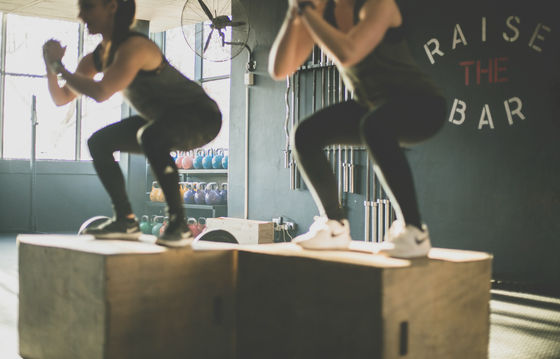Experts point out that intense exercise can seriously damage the kidney

by
With the new year coming, there are probably many people who are going to work on their exercise and diet anew. However, experts have warned that suddenly intense exercise by underactive people can cause serious kidney damage.
The serious consequence of exercising too much, too fast
https://theconversation.com/the-serious-consequence-of-exercising-too-much-too-fast-129501
Tamara Hugh Butler, Associate Professor of Exercise and Sports Sciences at Wayne State University, is an exercise physiologist and sports medicine expert who is studying exercise-related collapses and more. As Butler said, `` I've seen many cases of skeletal muscle damage, '' saying that exercising continuously without excessive exercise or proper rest periods would be harmful to the human body. Points out. Specifically, if skeletal muscle is damaged by excessive exercise, muscle cells release toxic chemicals into the bloodstream, which can damage the kidneys.

by
Damage to skeletal muscle muscle cells is called ' rhabdomyolysis ' in medical terms. When muscle cells are damaged, their contents are released into the bloodstream, which contains enzymes such as creatine kinase , electrolytes such as potassium, and proteins such as myoglobin .
Among them, myoglobin is a very large substance, so it seems that there are cases where it blocks the glomeruli and renal tubules , which are the filtration devices for kidneys. Others dissociate into toxic by-products that can damage the kidneys. In some rare cases, myoglobin released into the blood due to excessive exercise can cause kidney function to stop completely.

by
In a study of 34 university swimmers, six subjects suffered from rhabdomyolysis when subjects were trained over 20 minutes, such as how many times they could hang or bench press. It has been discovered that it has developed.
According to Butler, the incidence of rhabdomyolysis due to overtraining is increasing, especially in college sports teams. The appearance of rhabdomyolysis appears to be particularly common in American football players when they start practicing in January after the off-season, and a paper summarizing this has been published.
Butler said that the rhabdomyolysis found in American football players was caused by 'too much exercise,' 'too early to exercise,' and 'too fast to exercise.' In addition, rhabdomyolysis has been confirmed not only in American football but also in people engaged in various sports such as soccer, swimming, lacrosse, athletics, basketball, softball, volleyball, and golf.

by
Unlike people who continue exercising in college club activities, even those who exercise to correct the loss of physical strength and excess weight resulting from normal imbalances can cause 'rhabdomyolysis. There is plenty of potential, 'Butler points out. Not only heavy lifting such as weightlifting and cross-fit training, but also army fitness aptitude tests and excessive gardening alone may cause rhabdomyolysis at a level that causes kidney damage.
In Taiwan, 119 students developed rhabdomyolysis and were brought to the emergency room when a high school teacher instructed the students to do 120 push-ups in 5 minutes as part of the class Has also been reported . In this case, skeletal muscle cell damage started about 5 minutes after exercise, but rhabdomyolysis found in a race running a long distance of 246 km was 36 hours after exercise. that the onset is found it is.

by Andrea Leopardi
What is needed to prevent rhabdomyolysis is to combine gradual training with proper rest to build muscle, improve fitness, and reduce body fat. According to Butler and colleagues, if the muscle cell membranes fully adapt to the training load, it will take about two weeks of gradual training if you start training after a long vacation or after a short period of exercise. is.
Also, when training after a long vacation or when a person who lacks exercise suddenly starts training, it can be unbearable muscle pain that does not heal over time, muscle swelling at a level that limits exercise, and nausea. If you can see ``, vomiting, or both, '' `` dark urine like Coca-Cola '' etc., Butler has warned that appropriate testing is necessary because of suspected rhabdomyolysis .
In addition, factors that increase the risk of developing rhabdomyolysis after exercise include “exercising in extreme heat”, “dehydration or excessive hydration”, “excessive drinking”, “excessive coffee intake”, “vegetarian and high protein” Extreme dietary habits such as food, 'being sickle cell disease ', etc. are mentioned, so more caution is required if this is the case.
'But rhabdomyolysis is an unusual symptom, but the number of cases is increasing, so everyone should be careful.' He added, 'Adhering to a physiologically sound approach to training can completely prevent rhabdomyolysis,' he said, and the importance of having the right training habits. You.
Related Posts:
in Science, Posted by logu_ii







